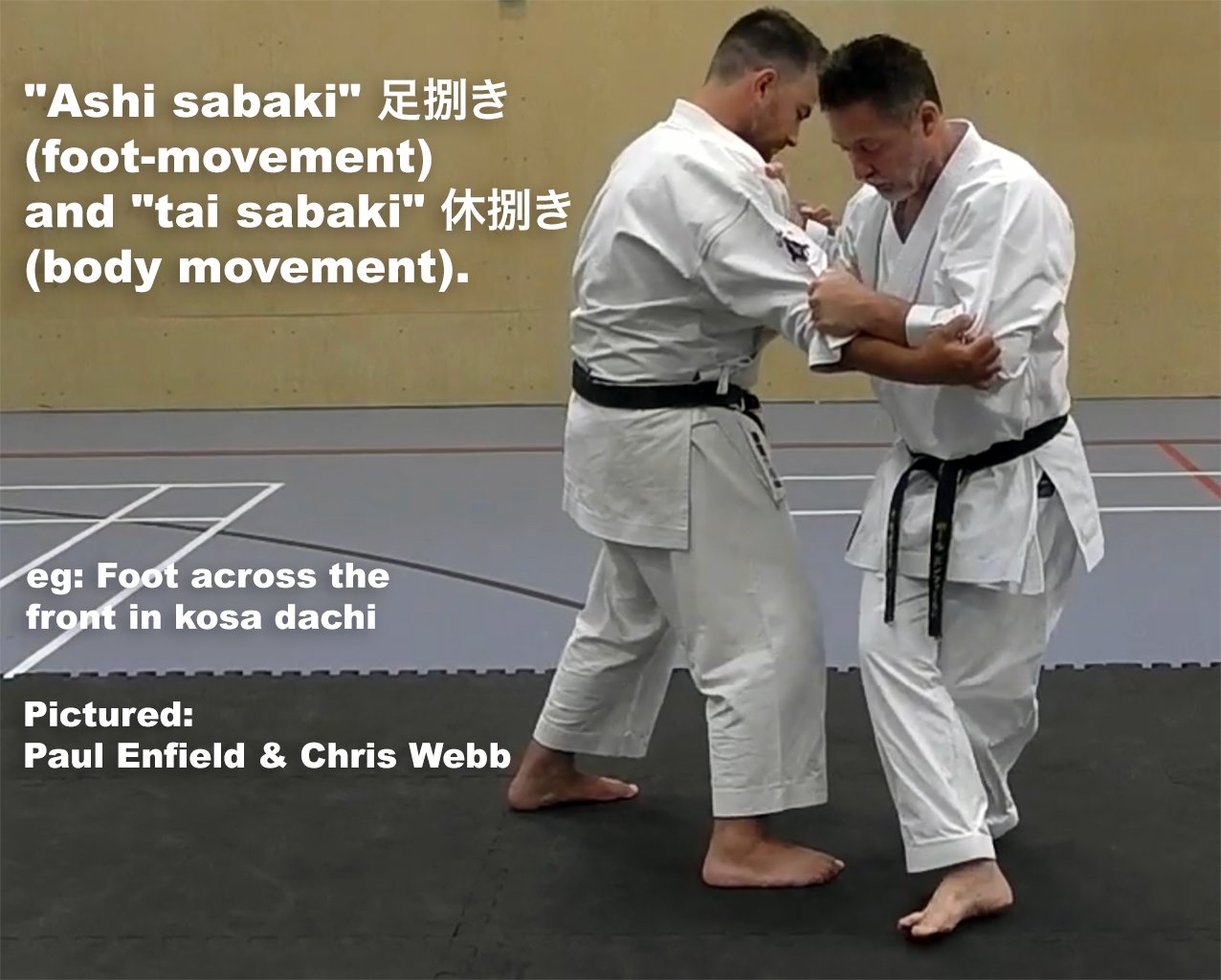
Practicing the principles of “ashi sabaki” 足捌き (foot-movement) and “tai sabaki” 休捌き (body movement). ??
.
.
Tai sabaki (体捌き) is a term which relates to ‘whole body movement’, or repositioning. Tai sabaki is usually used to avoid an attack, such that the receiver of the attack ends up in an advantageous position (angle).
.
Move off the attackers line rather than move backward or against the attack. You don’t need to stand there and ‘take’ the attack. You can move to a safer position.
.
Kosa dachi (kake dachi) is often used to good effect when moving within an ashi sabaki and a tai sabaki context. This is one of the primary applications for kosa-dachi in traditional karate, where stepping or twisting into kosa-dachi is used to slip under or around your opponent’s attack.
.
Stepping forward with the leg across the body is the easiest way of accomplishing it, but you can also step back into it, with the rear leg moving across your body, or you can twist into it.
.
Kosa-dachi can also be used to apply rotational force, either for tuidi (joint lock) techniques or for strikes. It is a very fast and nearly effortless way to twist your body, and therefore you can use your body to apply a technique instead of just using your arms and shoulders. It also allows you to keep your legs under you, and makes it more difficult for your opponent, as in effect you are lowering your center of gravity.
.
Just as pivoting into kosa-dachi can be used to generate power, untwisting out of kosa-dachi can generate power. This position coils your body, like a spring, and makes it easier to perform a throw. ??
.
.
? Pictured: Paul Enfield & Chris Webb; with thanks to Noah Legal
